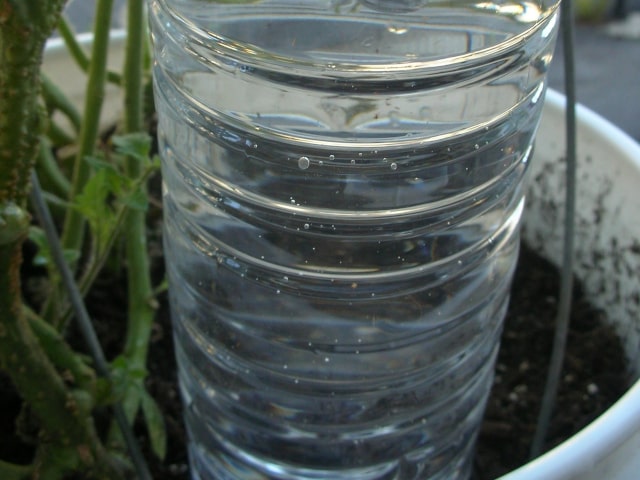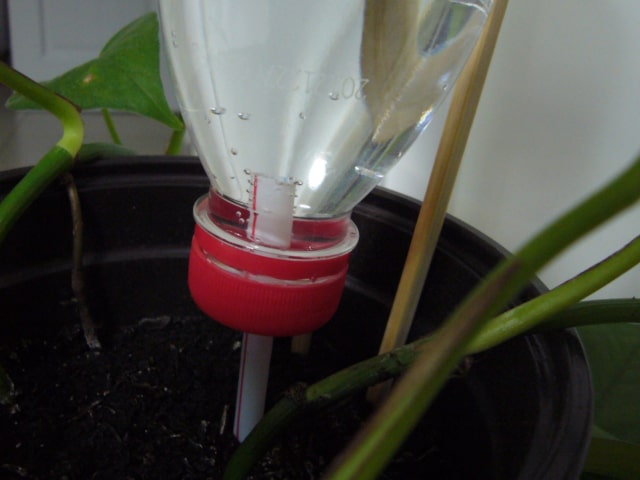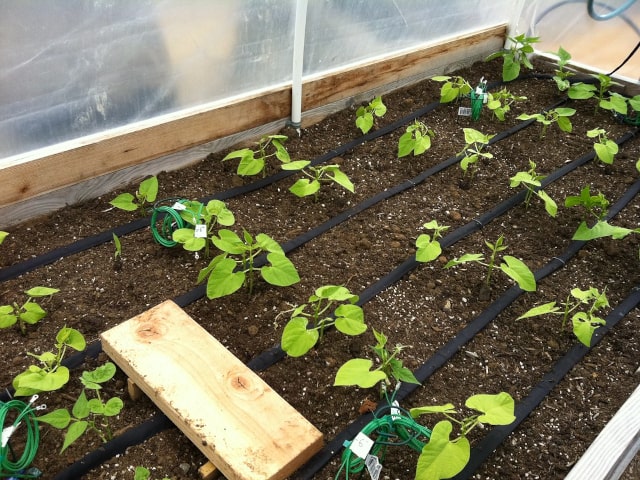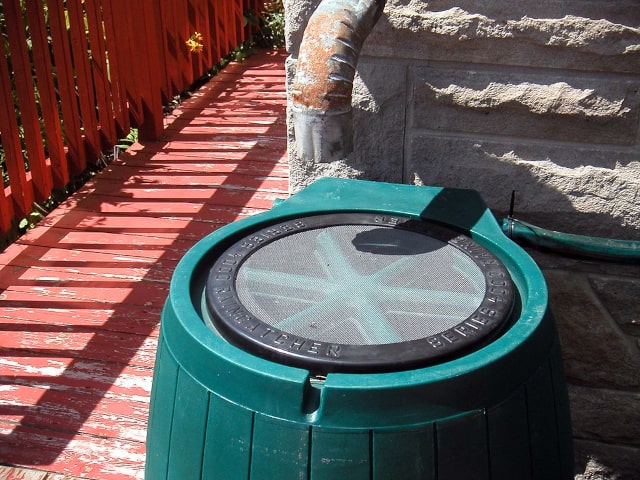
Drip-irrigation system, just like some other low-volume watering systems, is getting more and more popular with gardeners and plant growers. It is a great system to use for water restrictions.
One of its best advantages is that it preserves water while providing your plants with just the amount of water they need. It's therefore not surprising more and more people wish to introduce drip-irrigation systems in their gardens.
Another advantage to low-volume, low-pressure irrigation systems is that they reduce run off and overspray. They deliver the water slowly and just where your plants need them. They can be used to deliver both water and fertilizer near or at the root zone level.
This type of irrigation is very efficient for gardening and it promotes healthy plant growth. It puts water exactly where it needs to go - at the root system. It reduces over watering and wasted water. Drip-irrigation systems make all the plants watered exactly according to their needs.
All of this is achieved through low-pressure water flowing. The water flows through a drip irrigation hose and exits through a small system of "spaghetti" tubes with micro-sprays, bubblers or emitters placed exactly where the water should be delivered.
Selecting the Best Irrigation Components
If you wish to use drip-irrigation system in your garden, you should choose the best components. Here are the most important ones you should pay attention to.
- Pressure Compensating Irrigation Emitters. Emitters are vital for functioning of the drip system. When choosing emitters, make sure to pick ones that are pressure compensating. This type of emitter is made to deliver the same rate of water flow in the whole system, be it the first emitter or the last emitter in the hose. This is the best way to go so you will know all the plants are receiving the optimal amount of water and that the water distribution is uniform throughout the watering system.
- Self-Flushing Feature. All drip systems have filters to protect them, but debris will accumulate overtime in them. It's important to pick irrigation emitters which have a self-flushing feature. This will allow them to flush out any accumulated debris the irrigation filter may have missed, thus keeping the system clean.
- Built-in Check Valves. Another thing to keep in mind is that some drip emitters come with a built-in check valve. It allows them to come on and shut off at the same time. It is important because it can help you prevent "back-siphoning."
- Micro-Sprayers. They are very convenient because of their small size. Nobody wants to have tubing running all over their landscape. When micro-sprayers are used, the main water supply is installed up against the house and micro-sprayers are placed in the garden. The tubes can be covered with mulch so they are not visible.
- Bubblers. Even decks and patios can use drip-irrigation technology. In these cases, the main drip line usually runs under the deck or on the outside of the patio. Each pot has a small spaghetti tube with a bubbler installed for watering.
Using Drip Irrigation Filters
Another thing you need to keep in mind when opting for drip irrigation systems is a suitable filter. All drip systems need some type of a water filtering device to function properly. It has to be installed so it can protect emitters, bubblers and micro-sprayers from clogging.
There are many different devices you may wish to use for your garden or other places where you want to use drip irrigation systems. Most manufactures sell special drip irrigation kits including filtering. These kits are designed to work with other of their low-volume watering components.
Generally speaking, there are 3 types of filters you can use in low-volume watering systems. They are:
- Manual filters. They need an operator to pull out the filter and clean it out manually.
- Semi-manual filters. With this type of filters, operators have to open a value but the filter can clean itself after that.
- Fully automatic filters. These filters are completely self-cleaning.
People generally prefer fully automatic filters because they are self-cleaning, which saves time and reduces labor servicing of irrigation systems. However, it's always good that a system is manually checked by an operator to make sure everything is working and filters are doing their job properly. That's why semi-manual type of filters seem to be the best way to go. However, you may opt for any type of filter you find suitable for your garden.
Think About the Plants
When deciding on the most suitable drip-irrigation system for your garden or lawn, it's important to take some things into consideration. Above all, it's important to think about your plants. Any irrigation system you choose should accommodate them and should be made with their needs in mind. Think about plants first, irrigation second. This is the only way to choose the most suitable method and the best irrigation system for your garden.
Some of the things you need to take into consideration:
- Plant types
- Plant locations
- Soil types
- Site condition
All of the above will play an important part in the type of low volume irrigation system you may wish to use. It will also influence watering devices (drip emitters) you should use, as well as zone layout and water rates or "rates of precipitation."
What about Shrubs, Hedges and Trees?
You can use drip irrigation for watering your hedges and shrubs, too. In this case, the emitters are positioned to run under the hedges. This system is also suitable for growing citrus trees. The system is positioned in a similar way it is used for hedges and shrubs. You will put the drip emitters, micro-sprayers or bubblers to run under the trees. This is a very efficient way of watering and it works much better than overhead irrigation system.
Drip Irrigation Systems Used on Rooftops
Drip irrigation is eco-friendly so it can be used for watering green roofs and all types of rooftop gardens. This is a great way to water rooftops in an environmentally-friendly way. More and more people choose to transform their roofs into unique gardens, using native plant material and dry-loving plants.
Drip irrigation systems are perfect for this type of gardens because they can target the water flow and deliver it exactly where your plants need it. Also, they are ideal for gardens with odd shaped areas, such as rooftops.
In all these cases, drip irrigation offers effective, eco-friendly and very efficient solution for watering all types of gardens and landscapes.
Photo credit: Water Alternatives Photos




0 Comments